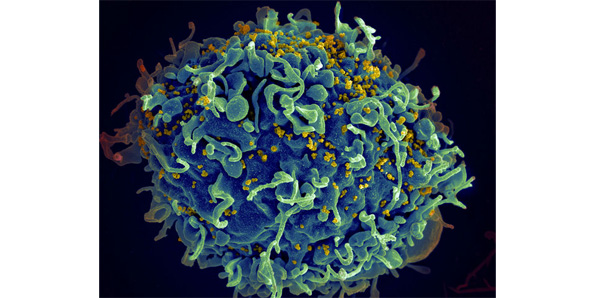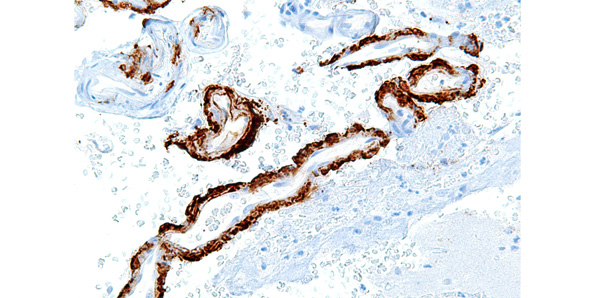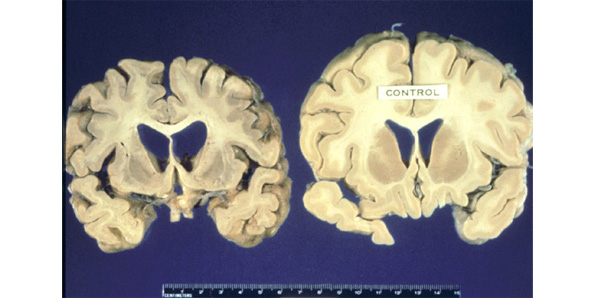The world today is full of many diseases and new diseases keep showing up owing to the modern way of life. Although a plenty of them are well-understood and can be overcome with a prescription, certain number are still incurable. They may or may not be lethal or common but they have been affecting the lives of people all across the earth. Top10 such diseases are enlisted below:
1. HIV/AIDS
Acquired ImmunoDeficiency Syndrome (AIDS) is one of the five most lethal yet incurable diseases. It affects the human immune system and is caused by the human immunodeficiency virus (HIV). HIV spreads when the virus comes in contact with any bodily fluid through unprotected sexual contact or use of unsterilized syringes. The virus affects the immune system of the sufferer’s body and makes the patient prone to potential infections.
Even after twenty-five years since AIDS was first identified, it remains a killer taking tolls on the lives of huge populations especially in the developing countries. According to the UN’s report, 38 million people are living with HIV, 5 million are infected annually, and about 3 million people die each year from AIDS.
2. Common Cold
Shocking as it may seem, yes the common cold is on this list! As everyone may know, common cold is marked by sneezing, sore throat, and coughing. It is one of the most commonly occurring diseases, communicating from one person to another quite rapidly. The symptoms usually begin after a day or two of infection (Rhinoviruses being the most frequent cause), and can last from 2 to 14 days. Although billions of cases of common cold show up every year, doctors still know very little about it.
They say, the common cold takes a week to heal with medicines, and seven days without them. The best one can do to avoid catching cold is staying away from the people already affected with the symptoms.
3. Cancer
Cancer is the uncontrolled growth of abnormal cells (called malignant cells) in the body. It refers to a group of about a hundred such cases of uncontrolled growth of the cancer cells in the body. The normal cells in the body multiply and die as per the requirements of the body. Cancer grows out of these normal cells which are the building blocks of the body. Cancer occurs when the cells divide too quickly and can develop in almost any organ or tissue, and therefore it is of several kinds: lung, colon, skin, bones, breast, nerve tissue etc. The causes of cancer, often referred as Carcinogens may include the following: excess alcohol consumption, toxins in the atmosphere, chemicals like benzene, certain poisonous eatables, especially the ones called aflatoxins, excessive sunlight exposure or certain genetic problems.
One in every three persons is affected by Cancer today and it is said to be the major cause of deaths all across the globe. Cancer treatments like use of chemotherapeutic drugs, radiation therapy or surgery are currently available but even if they can lengthen the life of a patient, none of them are cures. Though if diagnosed in early stages, some forms of cancer can be cured.
4. Cerebral Amyloid Angiopathy
Also known as congophilic angiopathy, cerebral amyloid angiopathy (CAA) is a neurological condition in which proteins called amyloid build up on the walls of the blood vessels of the central nervous system. Seen to be occurring generally in the elderly population (after 60 years), the cause of CAA is unknown. People with this condition have deposits of amyloid protein in the walls of the brain arteries, and not any other part of the body. CAA can cause bleeding into the brain, that result in drowsiness, headache, speech and sensational changes. Other symptoms include Episodes of confusion, persistent headaches, dementia and seizures. There is no known effective treatment for CAA, which can be done only to relieve the symptoms.
5. Schizophrenia
One of the most intriguing mental disorders, a Schizophernia patient cannot logically distinguish between reality and fantasy. Experts consider this to be the most puzzling of mental disorders, as the disease has no defining medical tests. The patient loses all abilities to rational thinking and begins to make-believe his fantasy worlds, which would rather be a medium of escape for him from his routine life. The symptoms prominently include delusions, hallucinations, non-coherence of thought and speech, ability to recognise the real world people. These symptoms may vary tremendously from one patient to another depending on factors still unknown to science. A brilliant portrayal of such a personality can be seen in the well-acclaimed movie, A Beautiful Mind.
6. Ebola
Ebola is responsible for a severe and often fatal viral hemorrhagic fever. It has been named after the Ebola river in Africa, from where it is said to have originated in 1976. Ebola is a virus of the Filoviridae that cause epidemic human disease. The disease is characterized by extreme fever and profuse haemorrhaging. Extensive research is being conducted to find an antidote for this lethal disease, but the disease is still incurable in 2013 with a fatality rate of 90% for humans.
7. Asthma
Asthma is a chronic lung disease in which inflamed airways become swollen and extremely sensitive. Asthma causes recurring episodes of wheezing, chest tightness, coughing, breathlessness that may range in severity. Generally coughing occurs either at night or early in the morning, but the airways become hypersensitive to a variety of stimuli like pollen, air pollution, smoke, weather conditions, and exercise.
During the process of breathing, the muscles around the airways rhythmically expand and contract. While contracting, the airways get narrower which causes less air to flow into the lungs. The swelling determines the severity as it worsens the condition. This recurring reaction can result in asthma symptoms that take place each time the airways are inflamed. Asthma affects people of all ages, but about half of all cases occur in persons younger than 10 years of age.
8. Diabetes
However common it may sound, though Diabetes is not lethal, it is incurable. Diabetes is a chronic disorder of the carbohydrate metabolism that affects the role of hormone insulin in the body and consequently it is characterised by high levels of sugar in the body. Diabetes generally occurs in two forms: Type1 and Type2.
Type I diabetes, which is insulin-dependent diabetes mellitus (IDDM). Here, the diabetic person is required to take hormone injections daily as it affects the ability of pancreas in the body to produce insulin. The most common form of diabetes is Type2 diabetes which is the non-insulin-dependent diabetes mellitus (NIDDM). In this, the body fails to work in coherence with insulin—which is responsible for monitoring the storage of glucose in the body. As a result, the high blood-sugar level triggers the pancreas to increase the insulin production to keep up with the increased sugar in the body. This condition generally develops in overweight people, however it may also occur to the elderly.
9. Creutzfeldt-Jakob Disease
Creutzfeldt-Jakob disease (CJD) is a rare, degenerative and fatal disease of the central nervous system. The disease was first spotted by German neurologists HG Creutzfeldt and AM Jakob, and thus the name. The disease usually is characterized by vague psychiatric or behavioural changes, followed by progressive dementia accompanied by abnormal vision and involuntary movement. With time, mental deterioration is prominent and involuntary movements, blindness and coma may occur. The disease commonly occurs in adults between the ages of 40 and 70, and is fatal within a year in almost 90% of the cases. There is no known cure for the disease till date.
10. Polio
Poliomyelitis, commonly known as Polio is an acute infectious viral disease that affects the nervous system. Polio that may lead to partial or full paralysis, usually begins with common symptoms like headache, nausea, fever, fatigue, and muscle pains. The polio virus may enter the bloodstream but only in about 1% of the cases, the virus may attack the central nervous system. Polio cases across the globe occur in children especially below the age of five. Depending on the nerves targeted by the poliovirus, different types of polio may occur that include cord, bulbar and bulbospinal polio.
Polio vaccination is one of the most important vaccinations given to children, but as far as cure is concerned, Polio is incurable. The widespread awareness about polio vaccines has eliminated the disease from many countries but it continues to paralyse a substantial number of children in the African and South Asian countries.











I disagree with number 3 sometimes certain cancers can be caused by a virus such as human papilloma virus. So if the infection is under control then the uncontrolled cell growth should go back to normal.